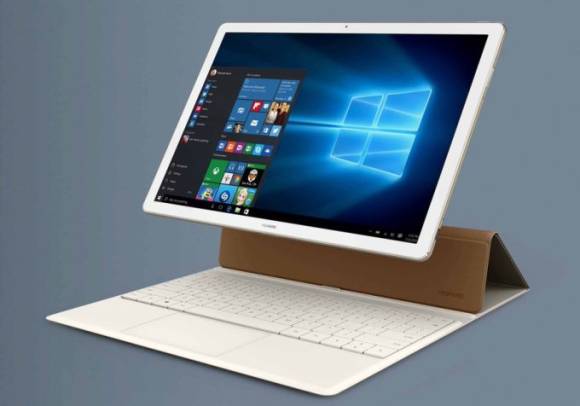Huawei just launched a product that’s got style, a thin bezel and fingerprint-unlock. There’s a USB port too.
I’m not talking about the Mate 8 that I’m testing right now I’m taking about the Huawei Matebook that just launched at MWC. It’s a 2-in-1 running Windows 10 on the latest Core M platform.

Huawei Matebook launched at MWC 2016
It’s actually a 12.9-inch tablet that starts at $699 (Core 3, 4 GB, 128 GB SSD) and you can add a keyboard that costs $129. A pen costs $59 and if you want to attach a monitor you’ll need an adapter. Huawei will sell you one for $89.
This fanless tablet has no stand and includes a 33.7 Wh battery, smaller in size to the battery in the Surface Pro 4, Lenovo Miix 700 and Spectre X2, all of which I’ve tested recently. It will certainly be powerful enough for office work, Minecraft and basic Full-HD video editing. The latest Skylake Core M platforms are truly as fast as a Surface Pro 3 for most tasks but don’t expect to reach the claimed 10-hours of battery life under normal conditions.
It’s interesting that a 12.9-inch Windows 10 tablet should launch at MWC and it’s interesting that Huawei, a company that has made a good name for itself in the smartphone market recently, should launch a Windows PC product. Isn’t it significant, however, that Huawei haven’t launched a Windows phone that can utilize Continuum?
How does a phone company position the pricing of a tablet PC? Huawei has chosen to go high-end here with a Core m5 version (8GB, 256GB) that costs more than the equivalent Lenovo Miix 700. It looks a lot slicker, yes, but that’s a huge price for a Core M-based PC. Are Huawei thinking of bundling and carrier deals here?
http://liliputing.com/2016/02/huawei-unveils-the-699-matebook-2-in-1-windows-tablet.html











In € you start with 799€
With tax included though.
Lenovo Miix 700 is not necessarily cheaper. The Huawei Matebook is lighter, has higher resolution screen, and the base model is $699 which is far less than the Lenovo. The base $699 model also has better specs than the $999 Lenovo with double the storage. The Huawei is actually light as a real Tablet, not wannabees like most Core based Windows Tablets that weighs 800g.
The question is on the battery life. They claim a new cooling system allows for lower power consumption and optimized circuitry on the motherboard will allow for 10 hours on a 33WHr battery. That is a big IF. Skylake has not advanced in terms of battery life compared to efficient Haswell systems. Haswell needed 50WHr to achieve 10 hour battery.
What about the Core m5 option? Well, Core M chips are pretty much a ripoff above Core m3, because thermals don’t allow m5/m7 models to perform highelr(and Intel has been practically lying to us about Core M capabilities). We’ll see if Huawei can differentiate themselves, but again its a big IF.
Chuwi hi12 …